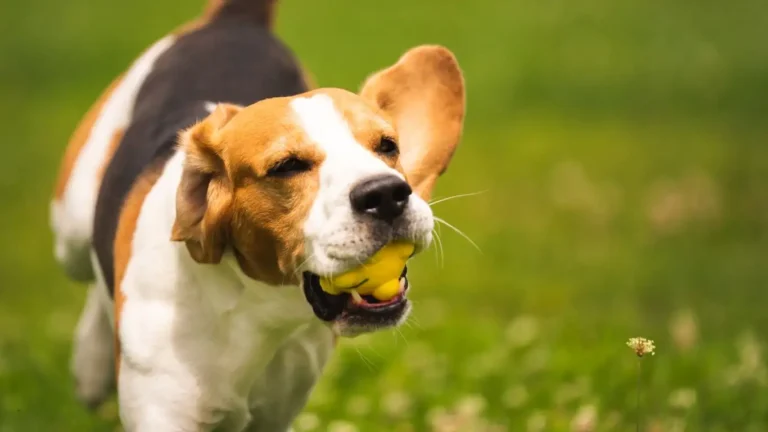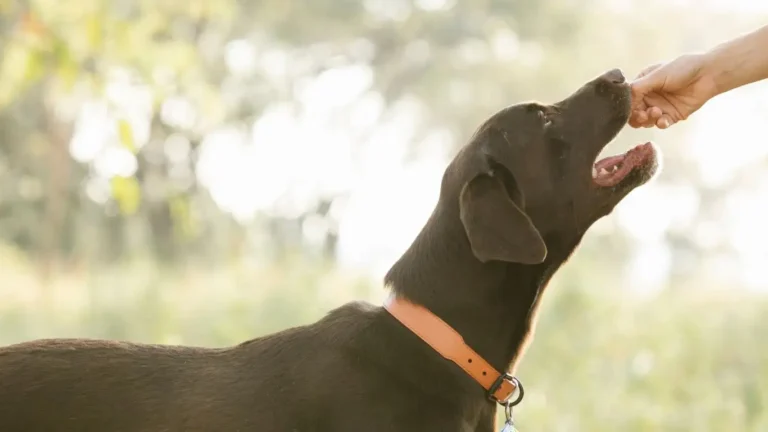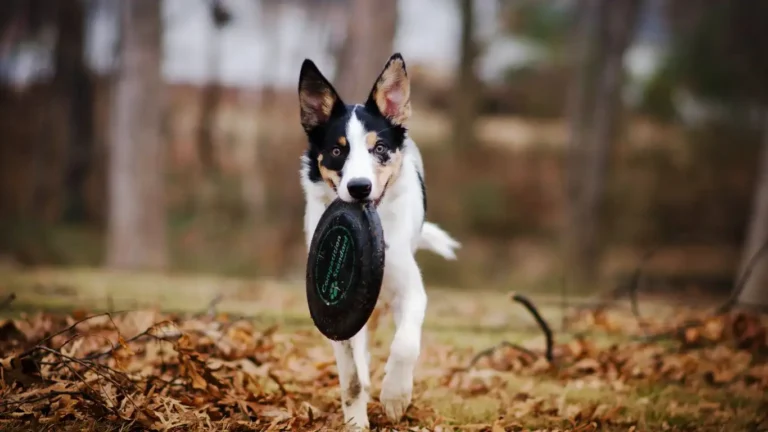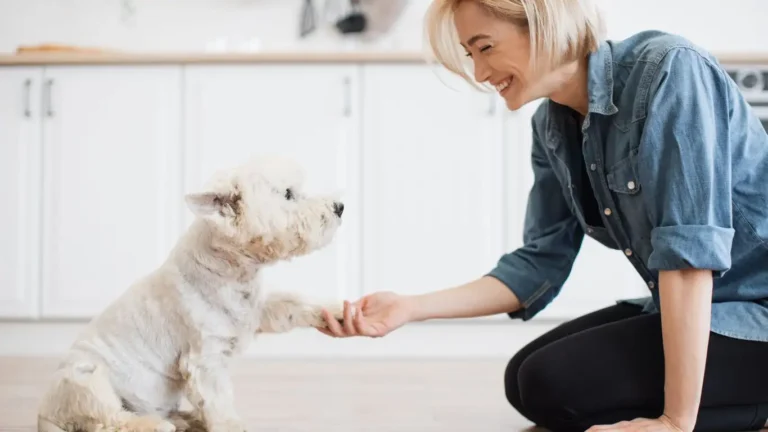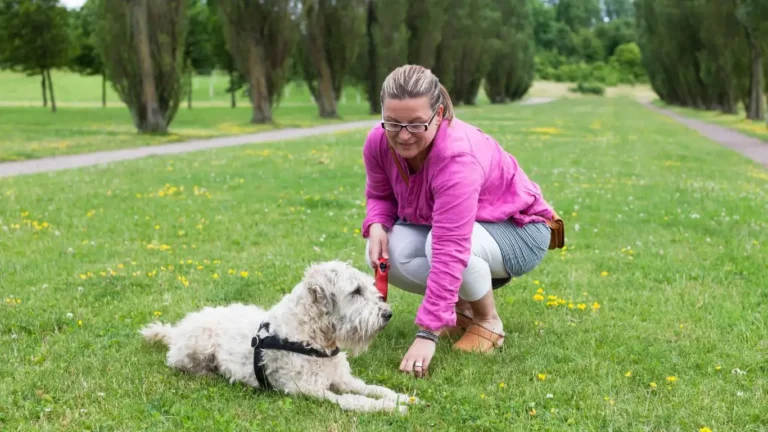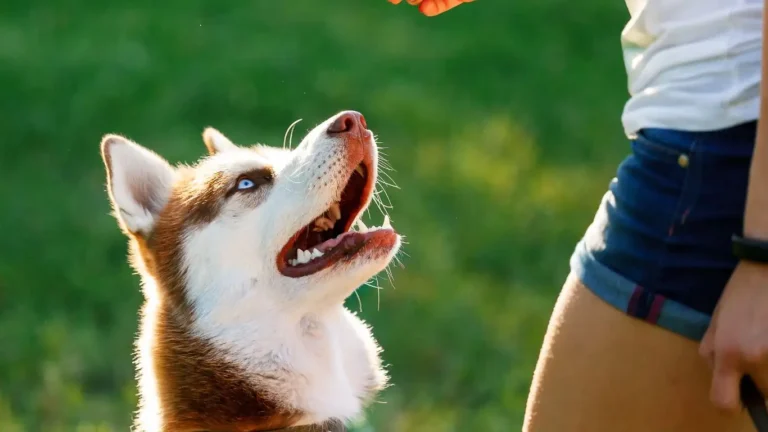How to Train a Dog to Sit Calmly in Waiting Rooms Without Stress
Hey there, fellow dog lovers! I’m Tarra, and as someone who’s spent years working as a Canine-Assisted Therapy Trainer, I’ve had my fair share of hyper pups, overly excited tails, and those comical “zoomies” in the middle of what should’ve been a calm session. Trust me, I’ve seen it all. That’s exactly why I’m diving into one of the most useful foundational behaviors any dog can learn: how to train a dog to sit calmly. Whether you’re raising a wiggly puppy or working with an older rescue, teaching calmness is a total game-changer—for both your sanity and theirs.
Why “Sit Calmly” is More Than Just a Trick
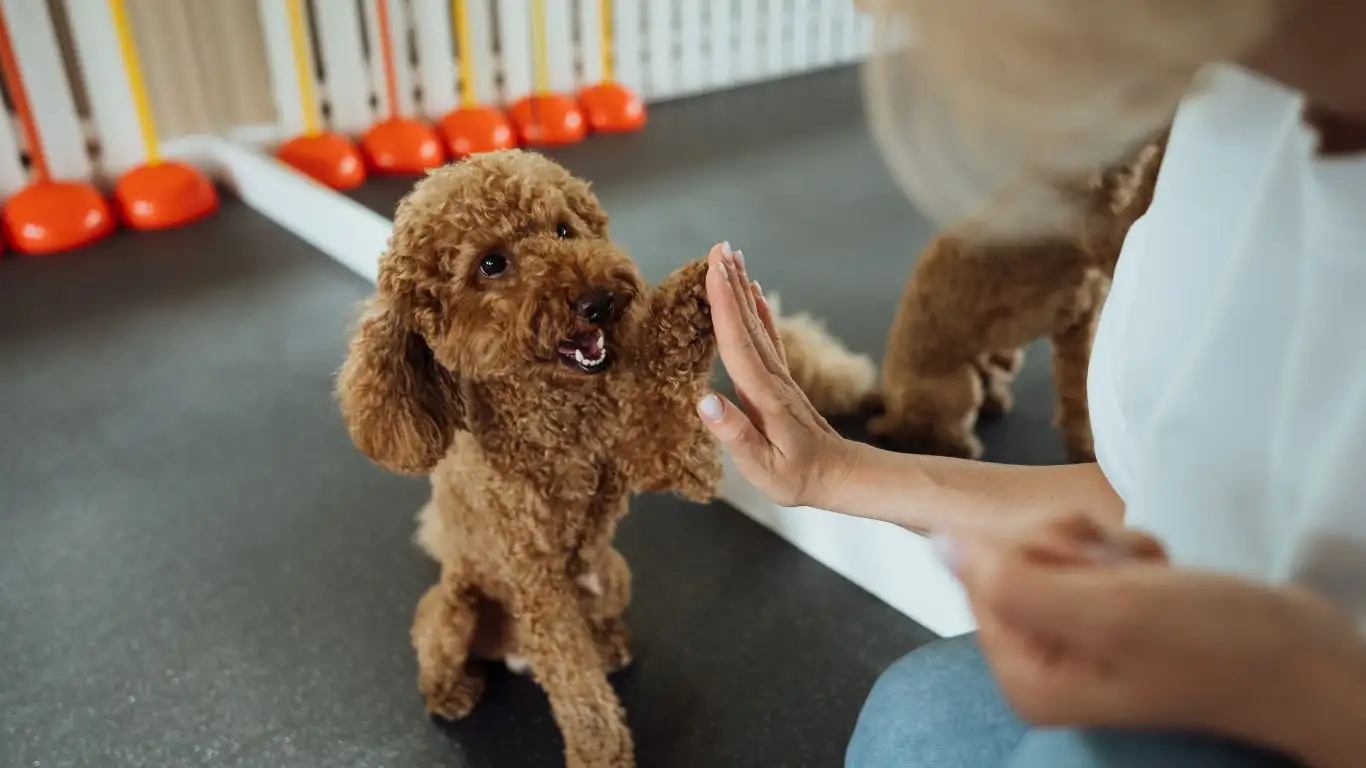
This isn’t just about obedience—it’s about emotional regulation. I’ve worked with therapy dogs who needed to remain composed in high-stimulation environments like hospitals or schools, and the first skill we always start with is a calm sit. It’s a foundation behavior that communicates to your dog, “Hey, I got this. You don’t need to do anything else right now but chill.”
Here’s the thing: dogs don’t come pre-programmed with chill mode. Especially if they’re young, reactive, or just super eager to please. But when you start focusing on building calmness into their sit command, you’re setting them up for success in all kinds of real-world situations—from polite greetings to crowded vet visits.
The Difference Between “Sit” and “Sit Calmly”
Let’s get one thing straight—not all sits are created equal. A dog can sit with their tail wagging at 100mph, body tense, eyes darting, ready to spring into action. That’s not what we’re after. A calm sit looks like this:
- Loose body posture
- Soft eyes (not laser-focused on your treat pouch)
- Stillness (or at least, minimal fidgeting)
- Waiting for release or next cue
In my experience, teaching a calm sit has helped reduce anxiety in rescue dogs and made hyper pups more manageable during public outings. It’s a small behavioral shift that packs a big punch.
Start With the Right Energy
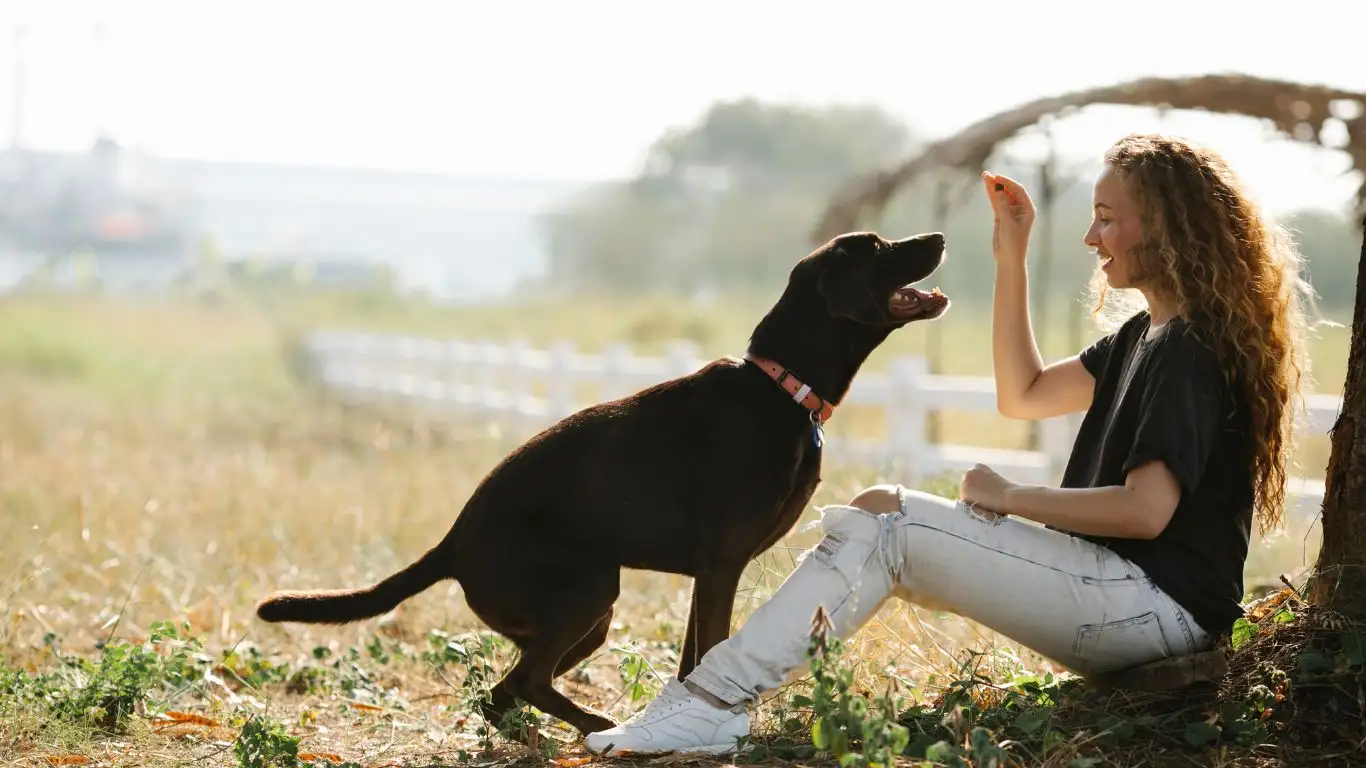
Before you even ask your dog to sit, check your own vibe. Seriously. Dogs mirror our energy more than we realize. If you’re jittery or rushing, your dog’s going to pick up on that. I always tell clients to take a deep breath, ground themselves, and approach training like a slow dance—not a sprint.
Choose a quiet space with minimal distractions. No squeaky toys, no doorbells, no chaos. We’re building calm habits, and that starts with a calm environment.
Timing Matters
If your dog just got the zoomies or came in from an exciting walk, it’s probably not the best time to teach a calm sit. Wait until they’re more centered. A little mental fatigue can actually work in your favor—just like toddlers, dogs focus better after a little physical activity.
Step-by-Step: Teaching a Dog to Sit Calmly
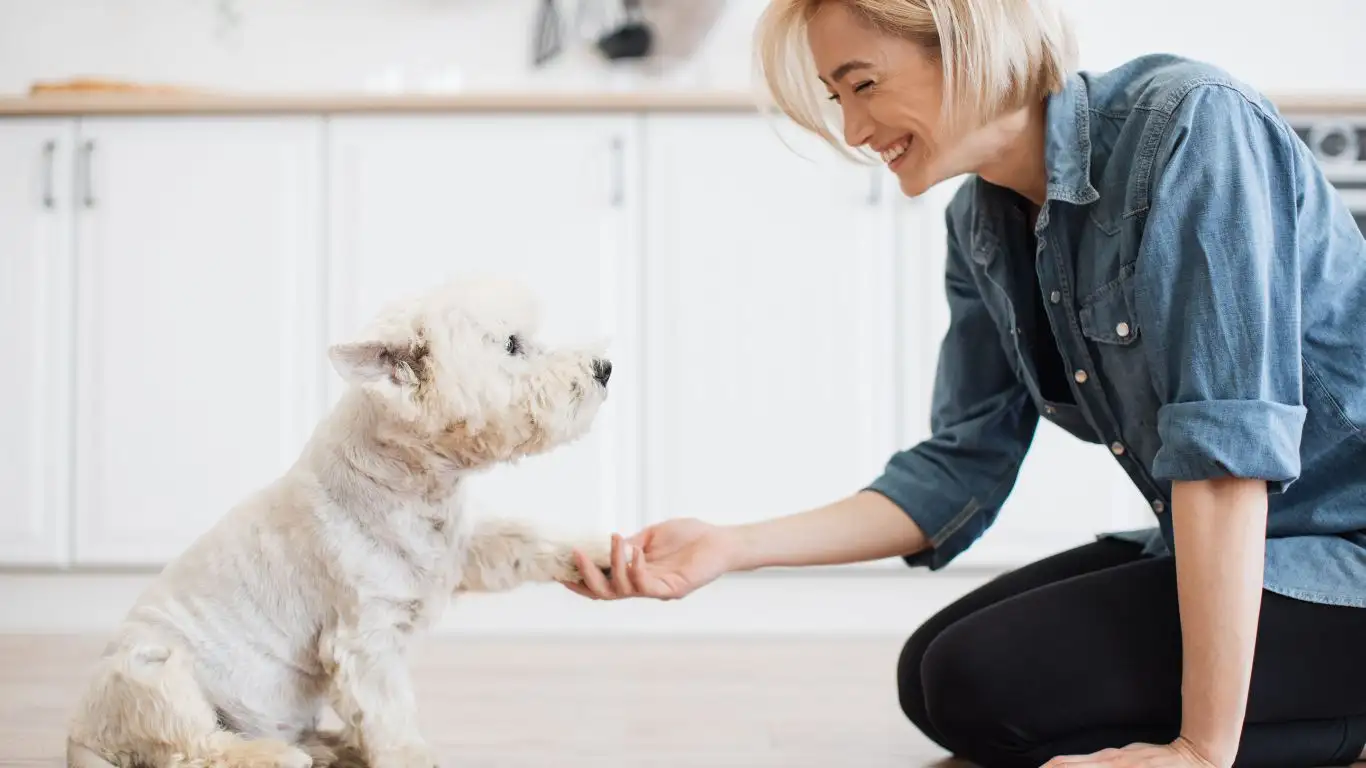
1. Start With a Basic Sit
- Hold a treat close to your dog’s nose.
- Slowly move your hand upward—this should naturally encourage their butt to go down.
- As soon as their bottom hits the floor, say “yes” or click (if you’re using a clicker), then reward.
Easy enough, right? But now let’s layer in that calm.
2. Add Duration… Slowly
- After your dog sits, pause a second or two before giving the treat. Don’t rush it.
- Gradually increase that pause to 5, then 10 seconds, rewarding only when they stay calm and still.
- If they get up or wiggle around, reset without scolding—this isn’t a punishment game.
Pro Tip from My Therapy Training Days: I often use soft breathing sounds or gentle phrases like “easy now” during the sit. It becomes a verbal cue for relaxation, and over time, dogs associate those words with the act of calming down.
3. Use a Release Word
One of the biggest mistakes I see is people forgetting to release their dog. If your pup doesn’t know when they’re done, they start fidgeting and breaking the sit on their own. I like using “okay” or “free.” It gives the dog clear boundaries—and dogs love clear boundaries.
So now you’ve got a pup who can sit, pause, stay chill, and wait for permission to move. That’s not just obedience. That’s emotional maturity in action—and it’s incredible to watch that click with a dog for the first time.
Building Calm Sit Into Daily Life
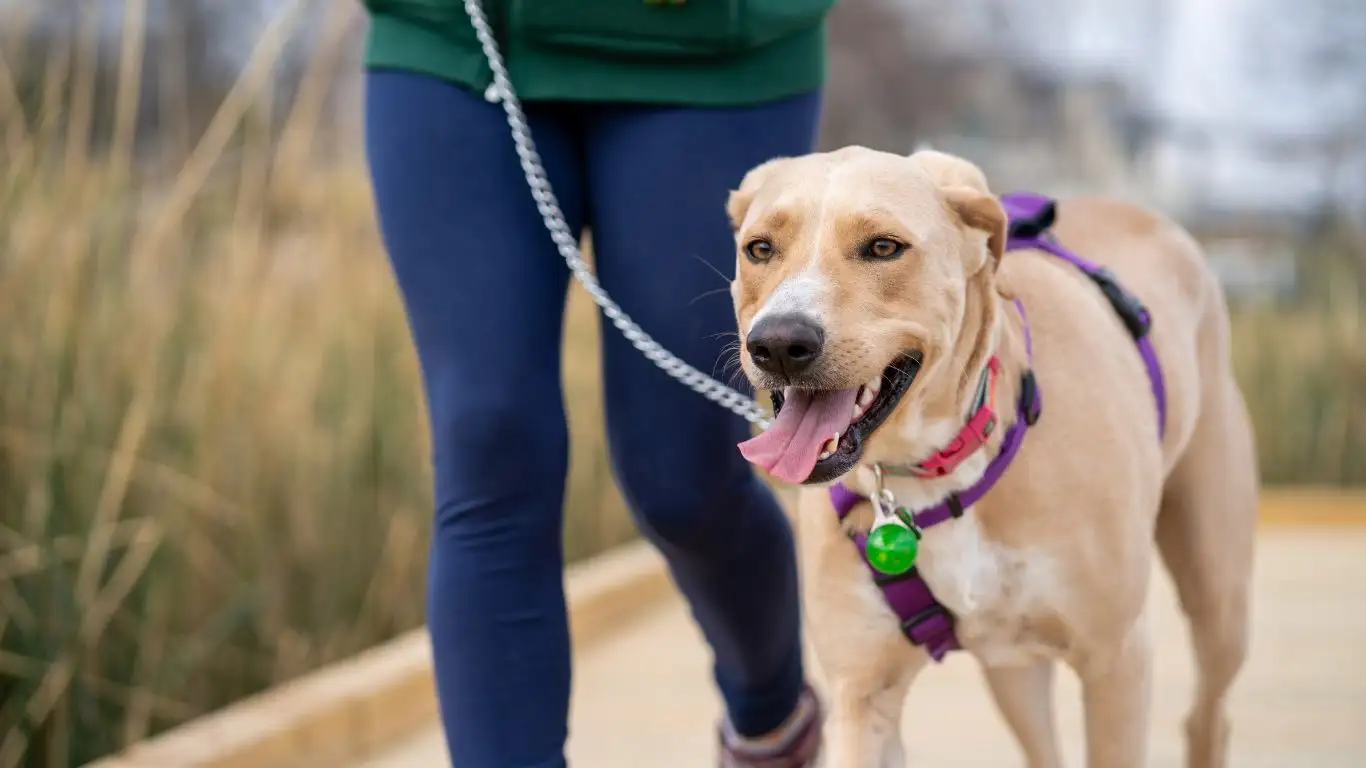
Alright, so now your pup is starting to get the hang of sitting still and relaxed when you’re in a controlled environment. That’s awesome! But the real test? Life. Real life. I always tell my clients, “Training doesn’t stop at the edge of your living room rug.” What really matters is how to train a dog to sit calmly when it’s not just the two of you in a quiet space with a handful of treats.
From my own experience as a therapy dog trainer, some of the biggest gains come when we start to generalize calm behaviors to everyday life. I’m talking about the front porch, the coffee shop patio, or right before dinner when your dog is practically doing backflips from excitement. That’s when the magic happens.
Use Real-World Triggers as Training Moments
So, let’s say your dog loses their mind when someone comes to the door. That’s your golden opportunity. Instead of shooing them away or yelling over the barking, ask for that calm sit. At first, it’ll feel like trying to meditate in a rock concert, but with practice, it works.
- Have your dog on a leash or harness for more control.
- As the doorbell rings, cue a sit.
- Reward only when your dog sits and stays relaxed—no barking, no lunging.
- If they break, reset without frustration. It’s all part of the learning curve.
Pro Tip: I used to keep a stash of high-value treats (freeze-dried liver, anyone?) near entry points just for moments like this. You want to catch calm behavior the second it happens and reinforce the heck out of it.
Handling Setbacks Without Losing Your Cool
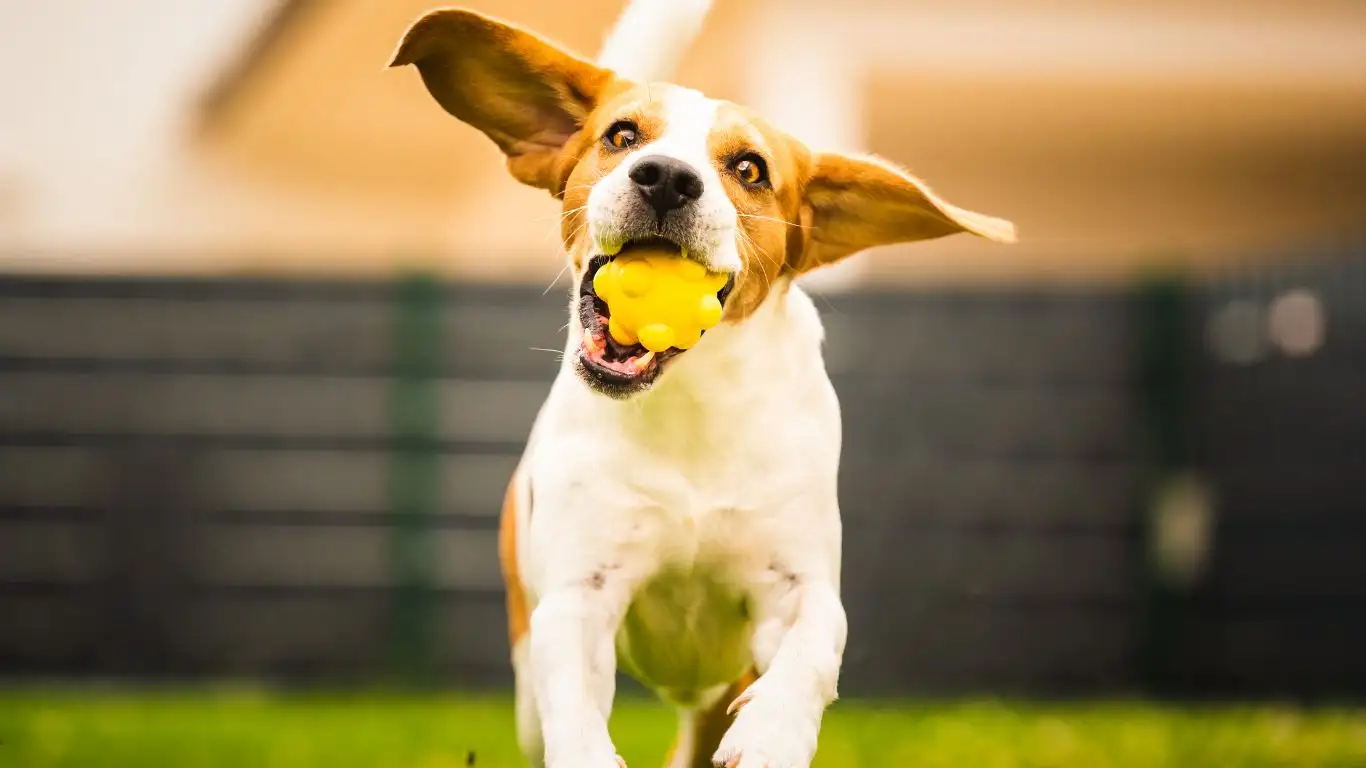
Let’s be real for a sec—progress isn’t always linear. There’ll be days when your pup nails it and others when it seems like they’ve forgotten everything. Totally normal. Every single one of the therapy dogs I’ve worked with hit those “off days,” just like humans.
Stay Consistent, Stay Patient
Training your dog to sit calmly isn’t just about repetition—it’s about consistent expectations. If one day you reward them for a calm sit before getting their leash, but the next day you let them leap around like a maniac, you’re sending mixed messages.
- Stick to your routine—even if you’re running late.
- Use the same cues and release words every time.
- Don’t rush through it just because you’re tired. (Yep, I’ve been guilty of this too.)
Some dogs catch on quick, others need more time. I had one golden retriever, Cooper, who took almost two months before he could calmly sit at the door without barking at every leaf that blew by. But when it clicked? He became the calmest greeter on the therapy team. Worth every minute.
Layer in Calmness With Other Commands
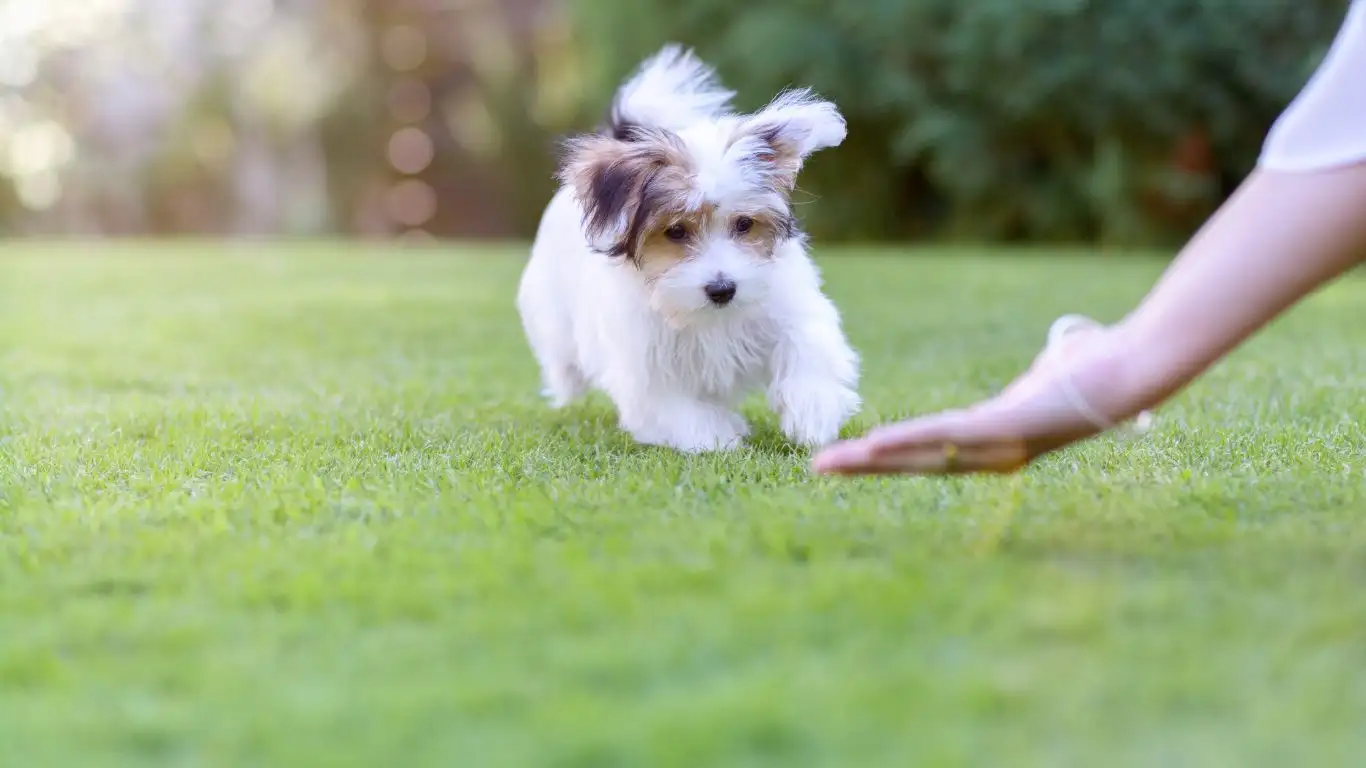
Once your dog can consistently sit calmly, it’s time to start layering that composure into other commands. This keeps things interesting and helps generalize calmness across different behaviors.
Combine “Sit Calmly” with “Stay”
Here’s a little drill I use a lot:
- Ask for a sit.
- Wait for calm body language—soft eyes, still posture.
- Then cue “stay.”
- Step back slowly and return, always rewarding the calm hold.
This helps dogs build impulse control, which is huge for reactive or overly excitable pups. I’ve seen this combo work wonders for dogs who used to lose their minds around squirrels, delivery people, or even the sound of a car door.
Introduce Calmness into Greetings
This one’s a game-changer for households with kids, guests, or that one friend who can’t resist talking to your dog in baby talk.
- Before allowing any greeting, ask for a calm sit.
- If the dog stays calm—then and only then—allow the interaction.
- If they get wiggly or jump, pause the greeting and reset.
When I was doing school visits with therapy dogs, this protocol helped ensure the dogs weren’t overwhelmed and that the kids got a safe, positive experience. Everyone wins.
Read Your Dog’s Signals
Finally, don’t forget to listen to your dog. Calmness isn’t just about stillness—it’s about emotional regulation. If your pup is panting, pacing, or avoiding eye contact, they might be overwhelmed. In those moments, take a step back. Revisit basics. Give them a break.
One of the most important lessons I’ve learned through years of canine-assisted therapy work is this: calmness is taught, but also earned through trust. And when your dog learns to sit calmly in any situation, what they’re really saying is, “I trust you’ve got this.”
Taking Calm Sit to the Next Level: Real-World Confidence
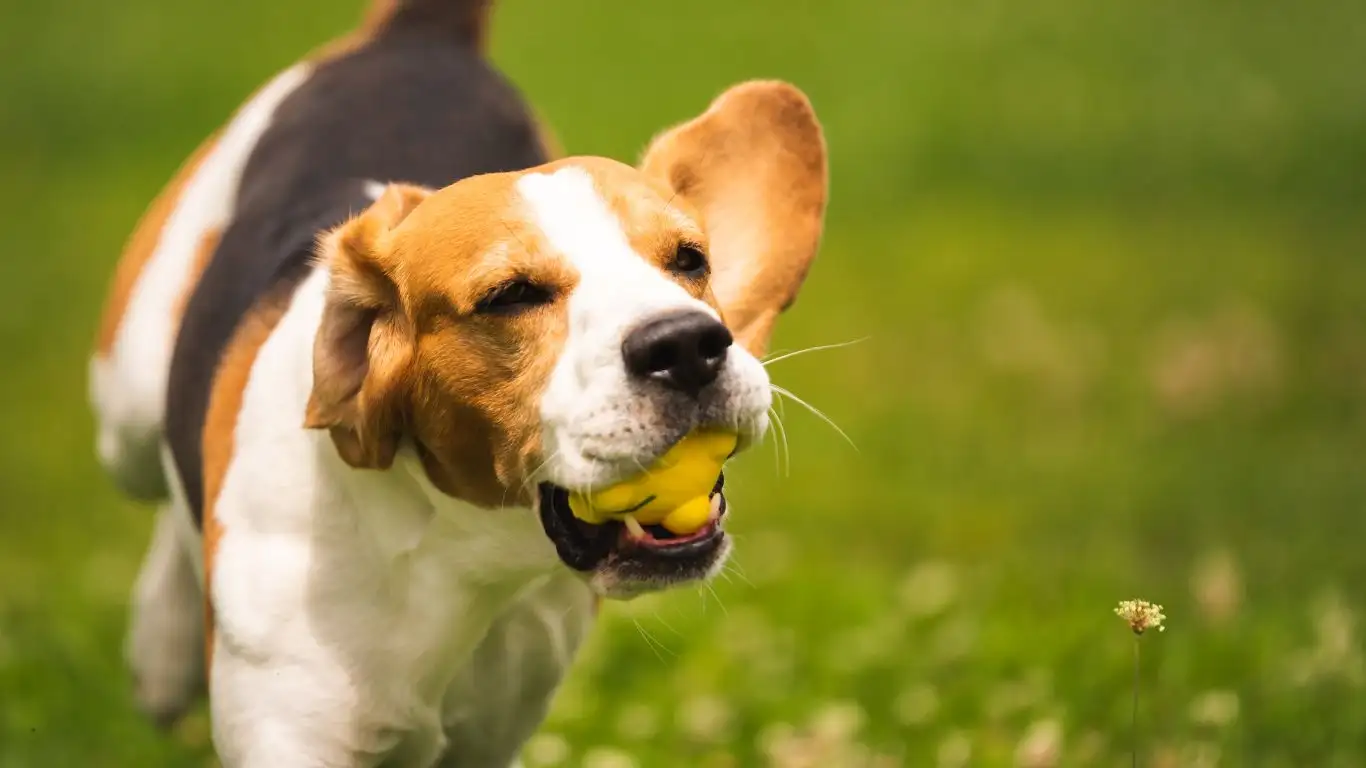
Once your dog can sit calmly at home and in low-distraction environments, it’s time to up the ante. In my work with therapy dogs, we’d eventually need our pups to stay composed in the most unpredictable places—crowded hospital lobbies, noisy classrooms, even airports. That level of calm is built step by step, but it starts with the same foundation: how to train a dog to sit calmly no matter what’s going on around them.
So now you’re probably wondering—how do I actually get there?
Proofing Calm Sit Around Distractions
“Proofing” is just a fancy trainer word for teaching your dog to perform a behavior in lots of different situations. It’s where most training falls apart if it isn’t done right. I’ve had clients say, “But he sits perfectly at home!” only to watch their dog completely unravel at the park or on a busy sidewalk.
Here’s how to build that resilience:
- Change locations. Practice in the backyard, on a walk, at the park, outside a café.
- Add mild distractions. Toss a toy nearby, have someone walk past, or play a sound.
- Gradually increase intensity. Don’t jump from quiet living room to dog park chaos in one day.
- Reward calmness, not just compliance. A dog who’s still but mentally stressed isn’t truly calm.
From experience: I had a rescue German Shepherd named Rosie who’d get overstimulated by children running. We worked up from watching kids play from 100 feet away, slowly inching closer while practicing calm sits. Six months later, she was sitting peacefully as kids read her books during library visits.
Using “Sit Calmly” in High-Energy Situations
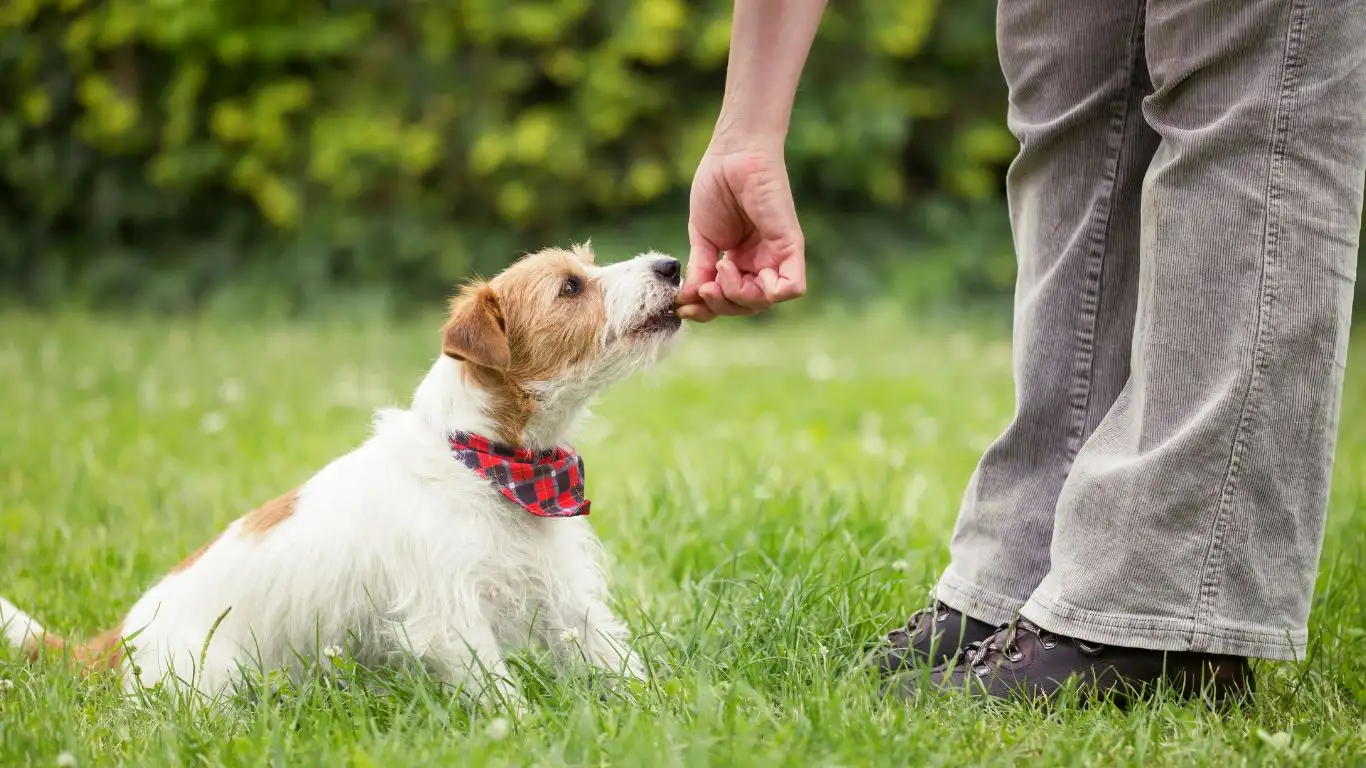
This is where your calm sit really becomes a superpower. Let’s talk about a few high-energy scenarios where it can truly shine—and save you from chaos:
1. Vet Visits
Waiting rooms can be stressful. Dogs pick up on unfamiliar smells, other anxious pets, and your own nerves. Cue a calm sit during check-in or while waiting and reward frequently for relaxed behavior. It becomes a coping mechanism and a routine that helps them feel safe.
2. Around Other Dogs
Most dogs lose composure when they see another dog. Practice calm sits from a distance, slowly decreasing that distance as they get more comfortable. Bonus: this helps prevent leash reactivity from developing or getting worse.
3. Guests Entering Your Home
This is a classic problem area. Dogs often associate the door opening with a burst of excitement. Practice sit-stay near the door and reinforce the calm behavior before anyone enters. You can even ask guests to wait until your pup is settled—it’s not rude, it’s responsible.
4. Pre-Meal Ritual
I always make my dogs sit calmly before I set their bowl down. No jumping, no whining, just relaxed stillness. This teaches patience and sets the tone for respectful behavior during feeding times.
Keep it Fun and Positive
I can’t say this enough: calm training should never feel like a chore. Keep sessions short, upbeat, and full of rewards. If things aren’t clicking, pause and try again later. Frustration won’t help either of you, and dogs are incredibly sensitive to tone and energy.
In my earlier days, I used to get discouraged when progress stalled. Then I learned to see each hiccup as valuable feedback. Is the environment too intense? Did I push too fast? Once I started adjusting based on what my dog needed in that moment, everything changed. We became a team.
Final Thoughts on Raising a Calm Companion
Training your dog to sit calmly isn’t about creating a robot—it’s about helping them feel safe, secure, and grounded no matter what’s happening around them. It’s one of the most powerful gifts you can give your dog, and in turn, it makes your life a whole lot easier too.
Whether you’re raising a future therapy dog or just want your best friend to greet guests without jumping, this kind of emotional regulation lays the groundwork for a peaceful partnership built on trust. And trust me, there’s nothing better than walking into a room with your dog calmly by your side, ready to take on the world together.
References
Disclaimer
This article is based on personal experience as a Canine-Assisted Therapy Trainer and is intended for informational purposes only. It should not be considered a substitute for professional veterinary or behavioral advice. Always consult a certified dog trainer or your veterinarian if you’re unsure about your dog’s behavior or training needs.
